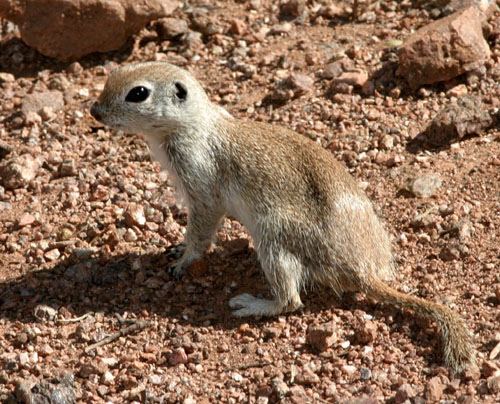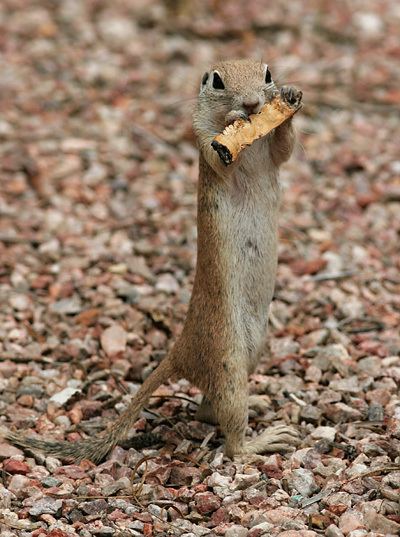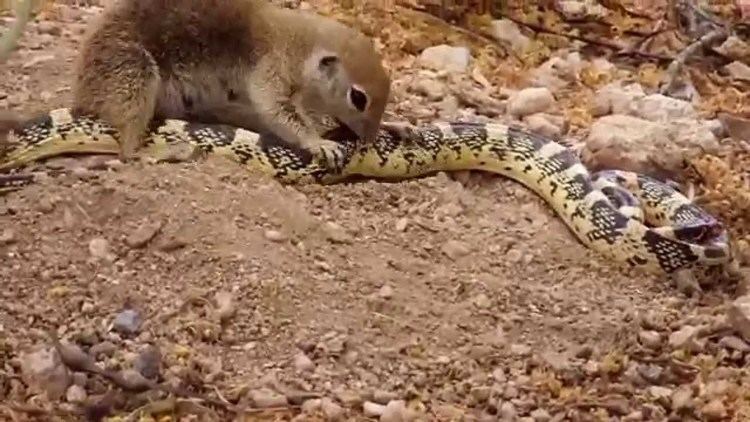Subphylum Vertebrata Family Sciuridae | Phylum Chordata Tribe Marmotini Rank Species | |
 | ||
Scientific name Xerospermophilus tereticaudus Similar Squirrel, Rodent, Mammal, Xerospermophilus, Antelope squirrel | ||
The round-tailed ground squirrel (Xerospermophilus tereticaudus), known as "Ardillón cola redonda" in Spanish, live in the desert of the Southwestern United States and Northwestern Mexico. They are called "ground squirrels" because they burrow in loose soil, often under mesquite trees and creosote bushes.
Contents
- Round tailed ground squirrel kills and eats long nosed snake
- Characteristics
- Lifecycle
- Behavior
- Social structure
- Diet
- References

Round tailed ground squirrel kills and eats long nosed snake
Characteristics

Most round-tailed ground squirrels are very small. Weight at birth is approximately 3.9 grams (0.14 oz). Adults weigh around 125 grams (4.4 oz). All have a long round tail and long, hairy hind feet. They have no fur markings, instead having a uniform sandy color, which matches the soil they burrow in. The underside of their body is usually a lighter shade. Round tailed squirrels average 204 to 278 millimetres (8.0 to 10.9 in) in length including the tail which is from 60 to 112 millimetres (2.4 to 4.4 in) long.
Lifecycle
The gestation period is 28 days. An average of 5.4 pups are born in each litter. They reach sexual maturity at 325 days. There is little information on the longevity of these animals but one wild born specimen lived to approximately 8.9 years in captivity. They are prey animals for coyotes, badgers, hawks and snakes.
Behavior

Ground squirrels are well-adapted to desert life. They can stay active even on the hottest of days, although they do tend to limit their activity during the heat of the afternoon sun. They live underground in the winter, typically from late August or September until January or February. They go into torpor, but do not hibernate.
Social structure

They have a semicolonial social structure, and will alert others of impending danger with a high-pitched alarm call. But they will chase away other ground squirrels who get too close to their own burrow. The males are dominant during the breeding season (January through March). The females dominate during raising of the young (March and April).
Diet

They are omnivores. The bulk of their diet is green vegetation, especially in the summer. They also eat seeds and insects (ants, termites, and grasshoppers). Most of their foods are chosen for high water content because of the shortage of available water in their environment. The average water content of the food they eat is 80%.
